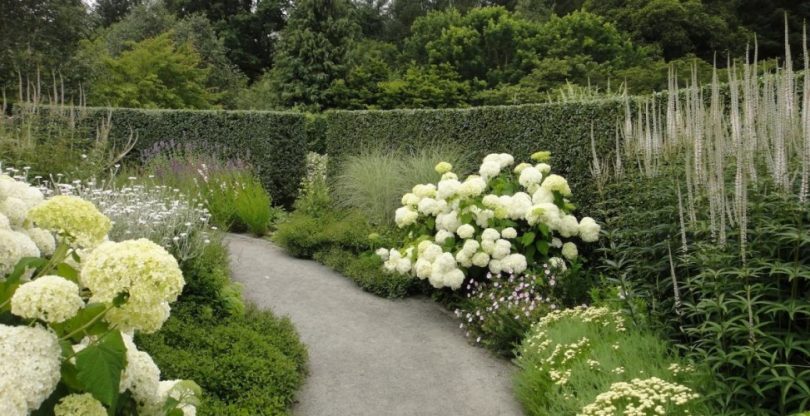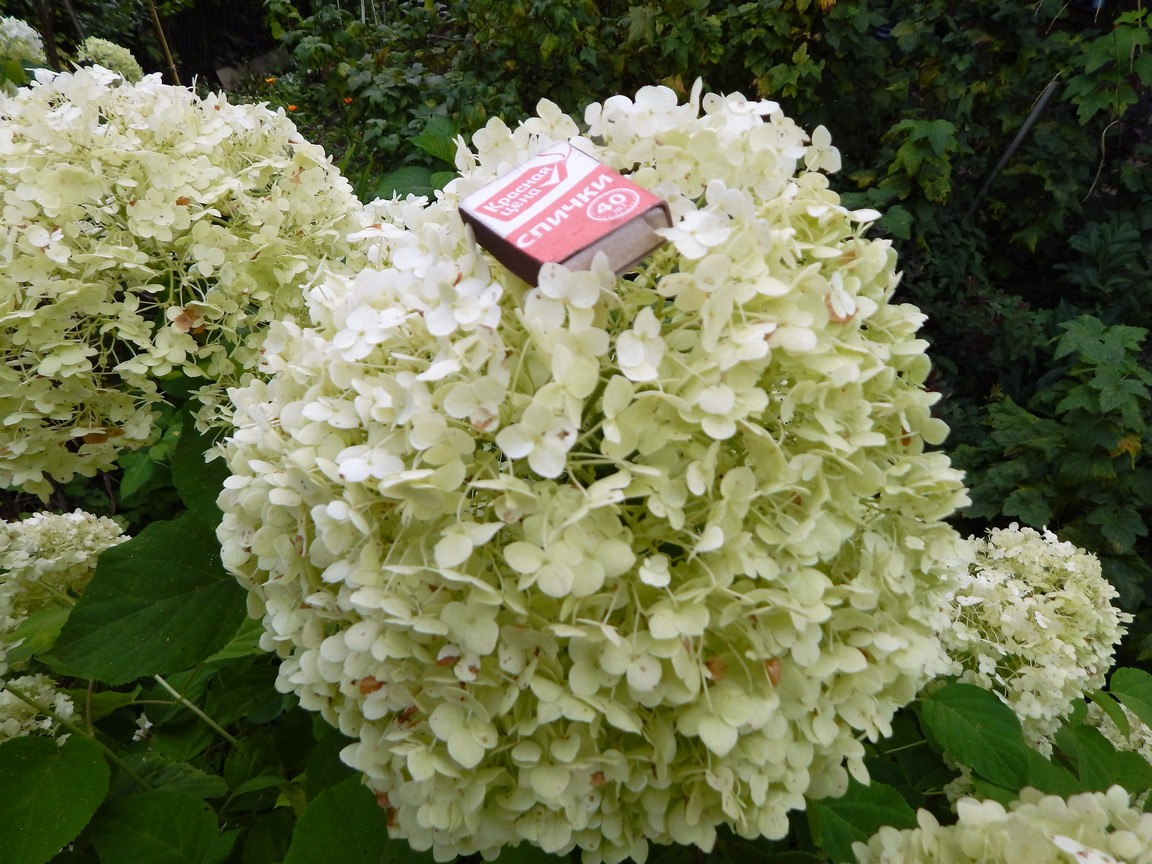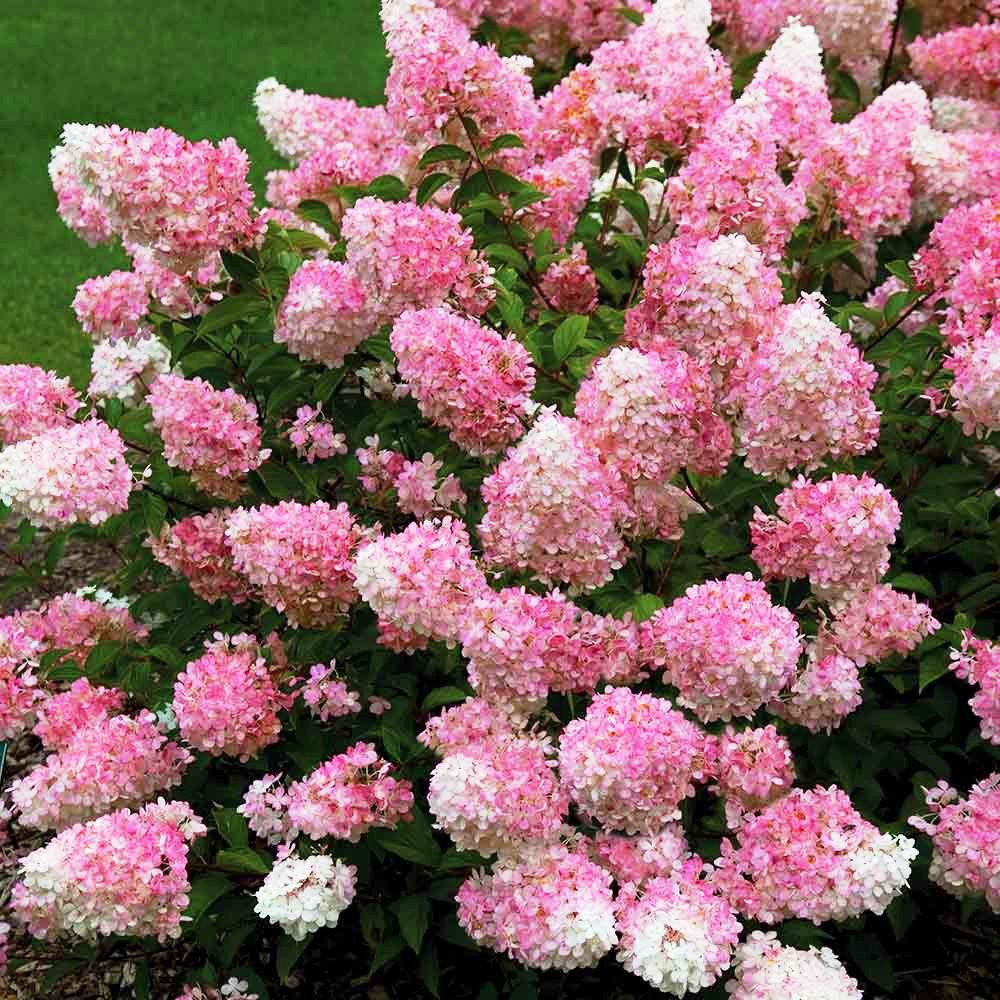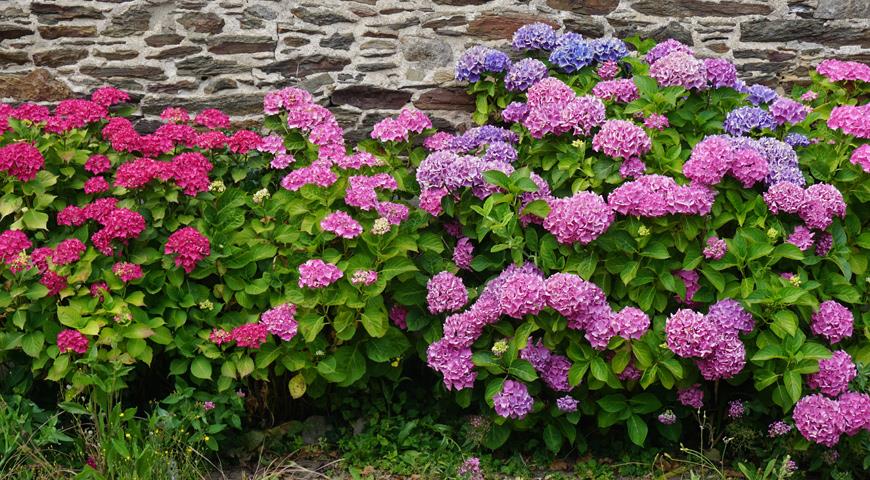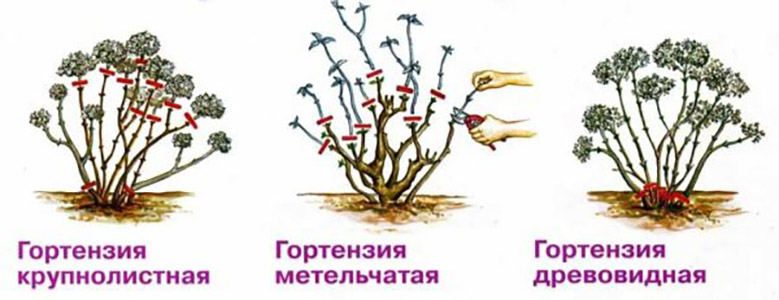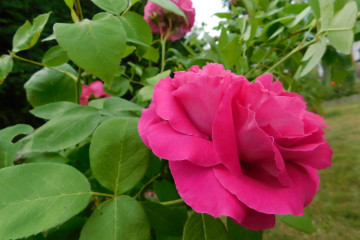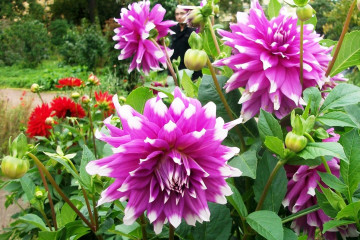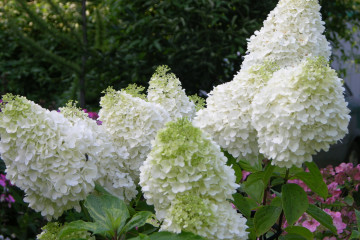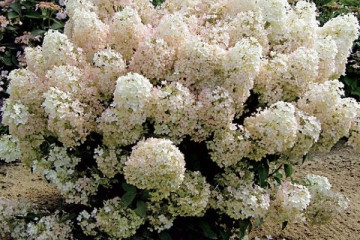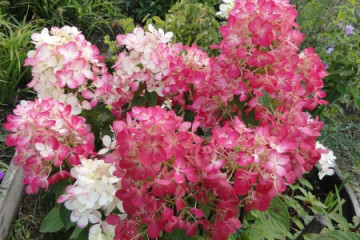Hydrangea white - what are garden hydrangeas
Content:
During the flowering period of the hydrangea, the garden takes on a particularly romantic and festive look. For landscape design, a plant that blooms from early summer to frost can solve a wide variety of problems. Tricolor, with a variety of shades, hydrangea will enrich the open area and create an attractive accent.
The origin and appearance of the plant
The modern plant is distributed throughout the world. Versatile and undemanding to care, it lives from 40 years and longer. Inflorescences blooming all summer cannot get bored, even white varieties change color throughout life. From greenish, to creamy, creamy, to white and vice versa. What can we say about large-leaved "chameleons", where on the bush you can see simultaneously beautiful flowers of different colors and shades.
Plant flower description
The shrub blooms with shields at the ends of young or last year's shoots, small (fertile) fruiting flowers. They are located in the middle, and large (sterile) bloom from the edge.
Types and varieties
In the conditions of the Moscow region and even Siberia, gardeners grow paniculate and tree-like varieties. Of course, there are varieties that are the most frost-resistant, capable of withstanding up to - 400 C, but mainly to make sure that the shrub will survive the winter, they spud it high, cover it with spruce branches. The rest of the varieties of hydrangeas for growing are more suitable for gardens of temperate and southern climates.
Tree-like
Treelike hydrangea has a characteristic feature, its inflorescences are spherical. A domed loose bush, tends to fall apart under the weight of the bunches. In the middle lane it grows about 2 meters. It is frost-resistant, some varieties have a t -39 ° C. After freezing of the ground part, the shrub quickly recovers and blooms on young shoots.
The original color of the tree is white, but thanks to selection work, the range of varieties has been enriched with all shades of pink.
Tree hydrangea (Hydrangea arborescens Annabelle) Annabelle, a native of the American state of Ohio, has been cultivated for almost 300 years (1746). The size of some inflorescences is close to 30 cm.
To this day, Annabelle's common white hydrangea is one of the most sought-after varieties. It also gave rise to varieties with red, pink, golden cream color:
- Pink Annabelle;
- Red Annabelle;
- Golden Annabelle;
- Incredible (Strong Annabelle) - the variety with the most massive (35 - 40 cm) inflorescences.
In warm climates, Annabelle grows into a 3-meter tree, in temperate climates the maximum size of a round bush hydrangea does not exceed 2 meters.
Hydrangea white globular, varieties:
- Annabelle;
- Incredibel;
- Grandiflora (Grandiflora);
- White House;
- Sterilis;
- Hayes Starburst;
- Hillsof Snow.
Pink ball hydrangea, popular varieties:
- Bella Anna;
- Pink Annabelle;
- Red Annabelle;
- Invincibelle Spirit
- Pink Pincushion.
Paniculata
The panicle (Hydrangea paniculata) hydrangea has been cultivated since 1861, there are much more modern varieties than those of the tree.
Panicle hydrangea grows large, up to 3 m, bush, lush crown, spherical habit. Loose bunches of flowers are collected in a wide pyramidal, conical shape.
Blooms from July until frost.Flowers, from greenish ripen and become snow-white, with a pinkish glow. As the flowers mature, they turn pink more and more, wilting is marked by greening bunches. Some varieties, like the popular Polar Bear and Limelight, do not have pink tints; in the process of development, their flowers acquire golden, creamy shades, with a gradual fading into green.
The maximum plant reaches 3 m in height, and the crown width significantly exceeds it (4 - 9 m). The plant is fast-growing, good conditions and competent agricultural technology will allow you to admire the blooming fountain already for 3-4 years.
Most popular varieties
- Grandiflora (Grandiflora);
- Floribunda (Floribunda);
- Praecox;
- Polar Bear
- Limelight unique color, golden green, cream;
- Silver Dollar creamy yellow hydrangea with a transition to white;
- Phantom;
- Wim's Red burgundy hydrangea;
- Pinky Winky
- Vanilla Fraise.
Both varieties of hydrangeas - paniculate and tree-like - can be used in a bouquet for a cut, they slowly fade and are perfectly preserved as a dried flower.
Large-leaved
Large-leaved hydrangea (Hydrangea macrophylla) is otherwise called garden - it is a bright, spectacular shrub, but alas, for a southern climate.
In the conditions of the middle zone, it cannot survive in the open field, the winter hardiness of the plant is t - 10 ° C. Some gardeners decide to experiment, but constantly digging up a hydrangea for wintering indoors is very laborious. In the shelter, the bush can undermine, the spring "temperature swing" is especially dangerous.
The hydrangea is purple, the hydrangea is lilac - it is still the same pink, at different periods of the flower's life. On one plant you can observe changes in the color of flowers of different inflorescences, a change in its intensity. Moreover, you can change the color of the bush by acidifying the soil at the roots. An interesting effect is obtained if the soil is periodically acidified from different sides.
Some types of large-leaved hydrangeas are more adapted to harsh conditions. So, in 2003 in the USA (Minnesota) the nursery St. Paul's Bailey Nurseries introduced Endless Summer. The plant is resistant to growing in the Moscow region (4th climatic zone), tends to bloom on the shoots of this year. The variety became the ancestor of the Forever & Ever series.
It sourced the Endless Summer Blushing Bride hydrangea and introduced the Early Sensation variety in 2005.
Other types of hydrangea
In total, the genus of hydrangea has more than 50 species. In Russia, the shrub naturally grows on the Sakhalin Peninsula and the Kuril Islands.
Hydrangea Bretschneider
High winter hardiness in Bretschneider hydrangea (Hydrangea bretschneideri). The plant was discovered by a botanist in 1882 in the mountains of China. The species has not become widespread due to its simplicity of its inflorescences, it has no varietal variety.
Flowering occurs in the second half of summer. Inflorescences are corymbose flattened, mostly composed of small white fertile flowers, only slightly sterile, large ones located along the edge of the bunch. The bushes are very tall, about 3 m can compete with the widespread thuja.
Stalked hydrangea
The shrub is a liana-like plant, with the help of the growing vols of the trunk of the suckers, air roots, it can wrap around supports up to 20 m high.Without supports, the petioled hydrangea behaves like a ground cover plant.
In its natural habitat, liana lives among coniferous forests, entwining powerful tree trunks. Petiolate hydrangea has spread from the east of Asia (Sakhalin Peninsula, Kuril Islands, Japan, Korea, China).
Other types of garden hydrangeas are not common.
Care features
The basis of plant care, regardless of the type of hydrangea, is correct pruning and regular watering.
Pruning should be carried out in the spring, before sap flow begins. All weak, thin branches are removed; strong flower shoots will not grow from them. During the flowering period, the shrub will be a little decorative, hydrangea with small inflorescences and flowers will not attract due attention. The number of stems required for a lush bush is 10 or 12 for an adult plant; they must be shortened by 1-2 buds.
Young shoots are blooming already in the current year, therefore, to thin out the shrub, you can safely remove the oldest branches "on a stump".
When planting a specific flower, it is better to focus on its varietal characteristics. Planting is required in a shaded area. The full sun on the south side is sustained by the white treelike hydrangea and some varieties of the paniculata. Hydrangea (vessel with water) - Latin transcription of the name, most accurately reflects the moisture-loving plant.
All types of hydrangeas need abundant regular watering. In the summer, during the dry period, for one bush of an adult plant (from 3 years old), it is required to water 10-14 liters of settled or rain water twice a week.
The shrub loves clay, slightly acidic, nutritious soil that is capable of retaining moisture. Regular feeding will allow you to get a large bush with abundant foliage and lush flowering throughout the season, if you follow the rule:
- Fertilizers with a high nitrogen content are applied in spring and in the first half of summer. They give the plant the strength to grow strong shoots.
- Potash and phosphorus fertilizing begins to be applied during the formation of inflorescences and until the end of autumn - these elements saturate the plant with the necessary trace elements for flowering and preparation for winter.
An adult shrub requires 2 to 3 buckets of diluted fertilizer. Three times during the season, it is advisable to water the soil with a solution of manganese sour potassium (0.2 g. 7 - 8 l).
The plant is extremely demanding on the acidity of the soil. The presence of lime in the soil contributes to poor development and growth. The plant can get sick with chlorosis, spots appear on the leaves, they gradually turn yellow.
When the first signs appear, it is necessary to increase the acidity of the soil. To do this, come in handy:
- special fertilizers for hydrangeas, with an acidifying effect;
- ash, lime, gypsum, chalk;
- dolomite flour;
- coniferous litter;
- as folk methods, hydrangeas are watered with kefir or whey;
- dissolved crystals of citric acid or a weak solution of vinegar.
Hydrangea - otherwise a royal rose - is able to turn a garden path into a secluded labyrinth, cover a fence with a flowering hedge, become a central accent on a green lawn - all within the power of a lush, unpretentious beauty.
